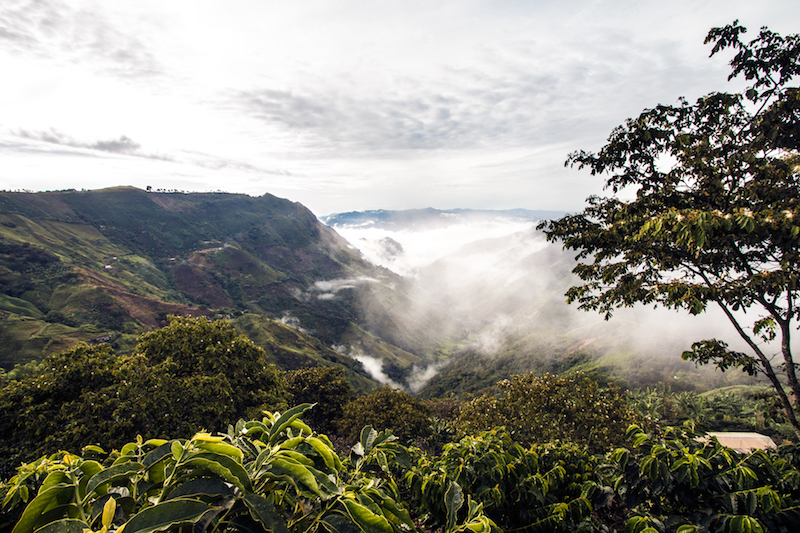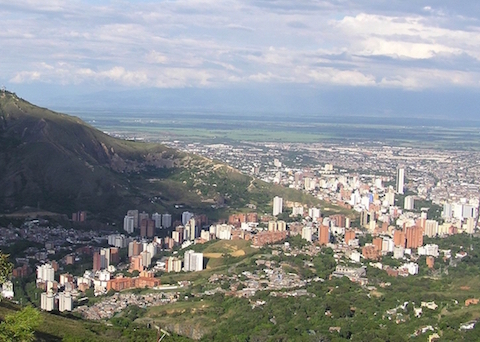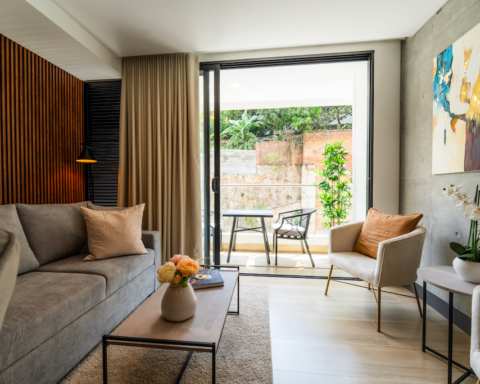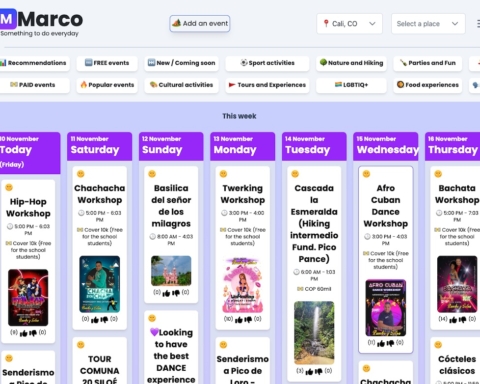My mom called me the other day in shock. She had just walked out of the bank after a long meeting with her advisor about the future of her savings. Starting January 1, 2018, her bank began charging a NEGATIVE 0.5% interest on her savings. That’s 50 cents for every $100 you have in your account.
Think about that for a second… paying your bank to hold on to and work with your money… it’s such a warped concept and against everything that I ever learned about money when I studied economics at the university. For several thousand years, money has always had a price. But times are changing and desperate central banks around the world keep inventing new methods to keep the debt-fuelled party going. On the other hand, it’s fun borrowing money when interest rates are low. Like 30-year mortgages at 2% annual interest like we several European countries offer. The downside is that a low-interest rate environment presses property prices up, making it hard to find a decent-priced deal in the market. And real estate in those markets is yielding 2-4% per year. Hardly an attractive proposal.
My mom lives in Denmark. Maybe this is far from reality you’re confronting at your financial institution. But what happens when your savings are earning negative interest? You lose money. Not just because all of the sudden you’re paying the bank for the privilege of working with your capital. Also because prices in society (usually) go up (inflation) and you lose purchasing power (unless your income and savings are rising faster). One dollar today will buy you less tomorrow.
Right now, money around the around the world is craving yield. Here’s a hint: In Colombia, you can still earn 4-6% interest on a savings account. But you can also do even better…
The fundamentals
The growth rate of the entire world’s population is about 1.12% per year. With a total population of 7.6 billion people currently living on this planet, this gives us a net growth of 230.000+ people per day. While I’m no expert on demographics, one thing you can be very sure of is that they are all going to eat and drink.
Farmland is a finite resource and one that is sure to benefit from this population boom. Every year, 85 million additional humans will need to feed off the same land as we have today. That’s almost two times the entire population of Colombia. You do not need to be a financial wizard to understand that demand for the output of the world’s crops will increase tremendously over the next few years. And what better to be selling than something ‘addictive’ coming from a farm, like coffee?
I get it… many people have a romantic fantasy about owning a cute little cottage with a little kitchen garden producing enough to sustain the family. But the reality is that it’s a lot of work. Much more than most people are willing to put into it. And in farming, you need to scale up to make big money.
Introducing the Green Coffee Company
FAR International (whom I work with) has teamed up with the Legacy Group to buy 3 existing farms in Salgar, Antioquia, with more than 1 million coffee trees. We will be planting an additional 600.000 trees and installing a wet processing plant of which there is currently only 28 in the entire country of Colombia. We call this project, the Green Coffee Company.
This is a crowdfunded investment project and you are welcome to join us!
On slide 12 of the basic investment presentation, it is shown that investors will be receiving returns of 14-28% depending upon if the most conservative scenario takes place or the most probable.
The basic reasons the coffee returns are so high are:
- That we are purchasing the farms while coffee prices are low and hence the farms are less expensive in COP than they were five to six years ago.
- Also, we are buying at another 35-40% discount because we are investing with USD which is much stronger than it was three years ago vs. the COP.
- Another key fact is that our farms will be 50 times larger than the average Colombian coffee farm and hence our coffee project will derive economies of scale that smaller farming operations can only dream about.
- Importantly we will be constructing a state of the art $1,200,000 USD wet processing plant that will pay for itself in less than four years and not only derives substantial revenues by helping smaller local farmers but also save the GCC time and money while improving quality and being environmentally friendly.
- Finally, this investment is recession proof as coffee has inelastic demand and during a recession, people will give up their new car purchases, new home buying, travel and steak dinners, but not their morning cup of coffee.
Colombia is kind of unique for coffee growers as the National Federation of Coffee Growers (FNC) guarantees to buy any output of coffee produced by a Colombian farm. In scenario 1, we estimate a price per “carga” (125 kg) of $600.000 COP, but the current price the FNC is paying is even higher – $740.000 as of March 8, 2018. Of course, this could change, but it serves to show that it’s very probable that we will be hitting the numbers in Scenario 2 or 3 as coffee prices are historically low.
To get a visual of this project, please look at our latest video at this link which was a recent filming of the GCC coffee farms by my friend and video blogger Sam Miller.

The Panama setup
The GCC is incorporated in Panama (and Colombia) and there are several reasons for that:
- We avoid opening accounts for all investors in Colombia and registering each investor’s investment with the Colombian Central Bank.
- GCC dividends will be paid from Panama are non-taxable by the Panamanian authorities for investors from any country (no withholding necessary) – of course, dividend income will likely be taxable in the investor’s home country but definitely not in Panama.
- GCC investors are not subject to any tax reporting in Panama or Colombia as a result of investing in GCC.
- Upon a sale of the GCC shares in the future at a gain, there is no Panama capital gains tax to worry about – of course, realized capital gain income will likely be taxable in the investor’s home country but definitely not in Panama
Exit strategy
What is the Exit Strategy for the Green Coffee Company (GCC) Investment Offering? That is the #1 new question being asked by many potential investors so allow me to explain.
The primary goal is streamlining the GCC farming operations and increasing cash flow so that investors can maximize the profits by selling to a large institutional investor such as a Starbucks, Nestlé, Louis Dreyfus, Cargill, Tim Hortons, etc.
The reason is, that these companies pay top dollars for larger assets that fit their investment criteria. They prefer to buy a larger, successful operation to aggregating a bunch of smaller farms. And they pay top multiples. So, the investors and the GCC will earn higher returns if we can package and sell to these types of investors, ideally over the next 5-10 years.
And what is their minimum size that will attract these institutional investors? We estimate about 10 million coffee trees on productive contiguous farms with state of the art wet processing facilities. At this time, we are on the path to achieving this goal starting with our 1.6 million trees for our initial GCC offering. Some good news is that we have already identified some larger farms with up to 7 million coffee trees in the areas of Salgar and other coffee towns in the region. Plus, our current GCC farm owners have several million more trees that could come up for sale.
After our initial GCC offering, it is our intent, in 2018 or 2019, to launch a second larger offering with our overall exit goal in mind. All current GCC investors will have the option of participating in a second offering. You will have that investment choice once you are armed with the knowledge, success and insights of the first GCC offering´s operations.
Is there any indication that the big boys in coffee have an interest in coffee production in Antioquia where Salgar is located? Well consider these recent articles:
· Nestles is already operating a wet processing facility in Jardin which is 35 minutes from Salgar
· Nestlé Targets High-End Coffee by Taking Majority Stake in Blue Bottle – The deal highlights the continued hot streak of artisanal coffee, whose rapid growth and fanatical customer base have continued to draw big business.
· Colombia is becoming Latin America’s brightest star
The future bodes well for the Green Coffee Company and if we are successful in selling out to these types of active institutional coffee investors in the next 5-10 years then it is possible we may even exceed our top end IRR goals of 28%.
Currently, the GCC offering is just over 85% subscribed at this time and the minimum investment is $25,000 USD.
Your questions answered
We already have many sophisticated investors onboard who have asked us a lot of questions about this project. To make it easy for all potential investors to understand this investment, we’ve compiled a Q&A with 170 questions submitted by our investors.
The next step
Whether you are a coffee connoisseur, morning sipper or even hate the taste, it’s hard to ignore the fundamentals. And due to the ideal year-round climate which allows for two harvests, optimal altitude, and soil, Colombian coffee is better positioned than coffee from many other regions in the world.
If you are interested in participating in or learning more about this extraordinary opportunity, then shoot me an email to patrick@caliadventurer.com and I’ll let send you the complete investment presentation along with the steps necessary to reserve your shares.









Hi Patrick,
it looks like a huge project you’re on to.
I have just few questions, as growing coffee is not an easy sector as it used to be.
1) How’s the terrain? In Colombia, most lands cannot be operated by machines, picking berries must be by hand, so more coffee trees mean more handwork.
2) How old are the trees? You know that after 6-8 years you have to cut the trunk and after again 6-8 years completely replace them. It then takes 18 to 24 months to produce coffee berries again, so no incomes during this time.
3) You estimate incomes 600’000 pesos per carga. But Fedecafé estimates the production costs at 700’000 pesos. Nowadays coffee growers are having a hard time as 740’000 leaves about 1’8 millions pesos revenues per hectares (about 8’000-10’000 trees) per year.
Thanks
Hi Sebastien,
Great questions!
1 – The terrain is hilly. And it is correct that this terrain cannot be operated by machinery. Everything is done by hand. Brazil and Vietnam have flatter coffee farms where machines can be used to pick the berries. BUT, as you can see in the picture above, a branch can contain berries that are red and ripe for picking along with greener berries that are still not ready. The machine can not distinguish between the ripe and green berries meaning that the coffee picked by machines are not considered to be high-quality. Hand-picked coffee, on the other hand, is considered to be a premium product.
2 – The trees on our farms are 5-10 years old. Every 5-8 years, you have to chop down the branch in a process called the “soca”. This is done to make sure the trees don’t grow too tall making it impossible for humans to harvest the berries. Since the trees compete for sunlight, it’s also a way of giving all trees access to sunlight and finally, it stresses the tree helping it produce more output. You are wrong about having to replace the trees so soon. A coffee tree can grow for up to 50 years but are the most productive until year 25-30 where they usually get replaced.
And yes, it is correct that new trees take 18-24 months before producing. But when we begin to replace trees it will be impossible to replace all 1.6 million trees at once. It will be a gradual process making sure that we do not have any years without income.
3 – Colombia has millions of hectares of coffee land and the FNC is giving an average price of production. Most farms in Colombia are tiny and they do not have any economies of scale like our farms will have. The wet milling facility is something that most farmers need to pay for but we will have a brand new $1.2M USD facility on our farms. This alone is something that will be adding substantial income to the project. Colombian coffee was shipping FOB at $1.80 USD / lbs yesterday and our farms reach breakeven around $1.05 – $1.10 USD / lbs. Also, you have to remember that coffee prices are at 10-year lows. Like any commodity, the prices fluctuate so we will most likely see better prices in the future. And even more so, if global warming begins to affect lower altitude coffee land putting a squeeze on global supply.
Hope this clarifies and thank you!
Patrick
Before you invest please consult the Colombian Coffee Growers Federation (FNC). Ask them about the validity of this. This sounds a scum.
I have been i Salgar. And this projekt is not a scam. Its an very good opportunity for investors. Heavy rainfall can damage some of the crops, but this fenomen only occors once in a while. And overall this is a very lucerative opportunity in my experience. As i said. I know Salgar and its farm very well. I used to live there for a while.
Hello! The colombian coffe is not the coffe best of the world .. is, the coffe more soft of the world, is this the true!
I love colombian coffee & it’s the best I think. Very very useful idea you have given me. Thanks a lot.